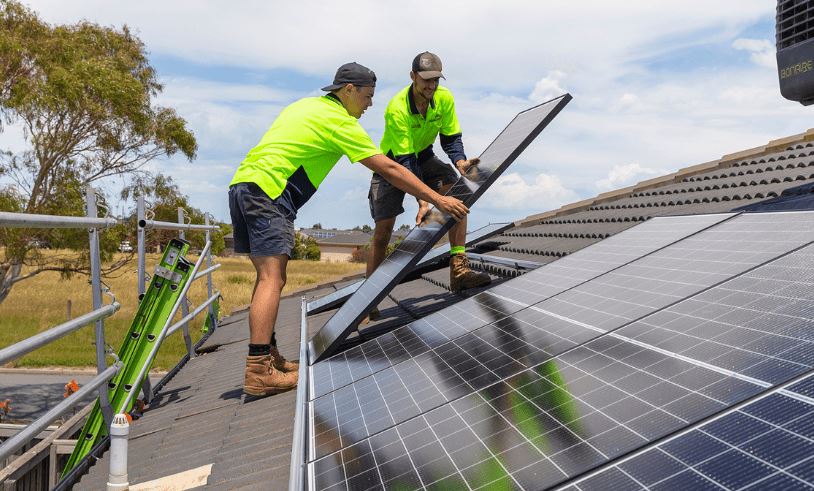Social housing stock has considerable rooftop solar potential, representing an opportunity for governments to support low-income households.
New modelling conducted by the University of New South Wales and the Australian PV Institute, and championed by solar and renewable advocates Solar Citizens, showed households would save an average of $860 a year if social and community housing stock in New South Wales were fitted with solar panels.
Fitting the 150,000 or so households in NSW would cost an estimated $532 million over five years, and help secure the state’s electricity supply. The investment, according to modelling, would be matched by bill savings within 4.2 years, and less for separate house and semi-detached properties. The installations would then continue to generate power for the two decade lifecycle of a typical solar installation.
“This is the low-hanging fruit … the Government can decide to roll-out solar for social housing from tomorrow as they own much of the stock themselves, and have willing partners in the not-for-profit community housing sector,” Solar Citizens national director Heidi Lee Douglas said in a statement.
The NSW government has yet to commit to a federal government scheme to upgrade social housing, which first requires states to join. Both Queensland and Victoria have already joined.
n NSW alone, UNSW modelling shows that the effort could produce as much as 1.1 per cent of the total annual generation within the National Electricity Market. So far, the NSW Land and Housing Corporation has installed solar on 7% of its dwellings, with a current aim of reaching 30%.
Equality
The issue of solar installations on households of is also proving to be one of equality. A report in Applied Energy published last month focused on Ireland found that latecomers to rooftop solar may struggle to access the grid. In Ireland, the grid could only serve some 5% of 1.6 million households based on an average 6 kW installation, without storage or connected EVs.
In effect, researchers found a risk of the rich effectively getting richer, given well-off households are generally first to install solar PV, access the grid without limits under a first-come-first-served approach, and benefit from subsidies as well. Latecomers, presumed to be less well off, may then be blocked from the grid as small-scale distributed generation installations eventually become cheaper and more readily available. Those in social housing are presented with limited opportunities for their own solar installations, and therefore rely on government support.
Previously, many other states countries have explored social housing and solar, and solar plus storage opportunity. 3,000 social housing properties in South Australia were connected via a Tesla-operated and Arena supported VPP. Recently, Brazil announced 2 GW solar plan for social housing program as well.
This content is protected by copyright and may not be reused. If you want to cooperate with us and would like to reuse some of our content, please contact: editors@pv-magazine.com.









By submitting this form you agree to pv magazine using your data for the purposes of publishing your comment.
Your personal data will only be disclosed or otherwise transmitted to third parties for the purposes of spam filtering or if this is necessary for technical maintenance of the website. Any other transfer to third parties will not take place unless this is justified on the basis of applicable data protection regulations or if pv magazine is legally obliged to do so.
You may revoke this consent at any time with effect for the future, in which case your personal data will be deleted immediately. Otherwise, your data will be deleted if pv magazine has processed your request or the purpose of data storage is fulfilled.
Further information on data privacy can be found in our Data Protection Policy.